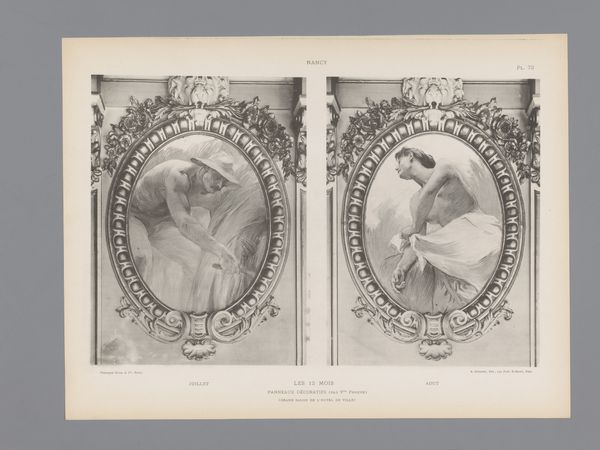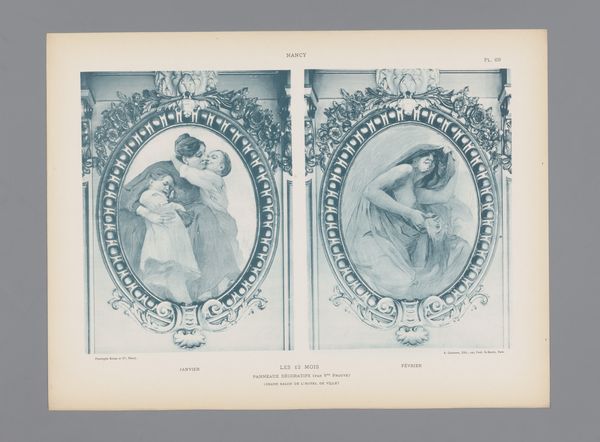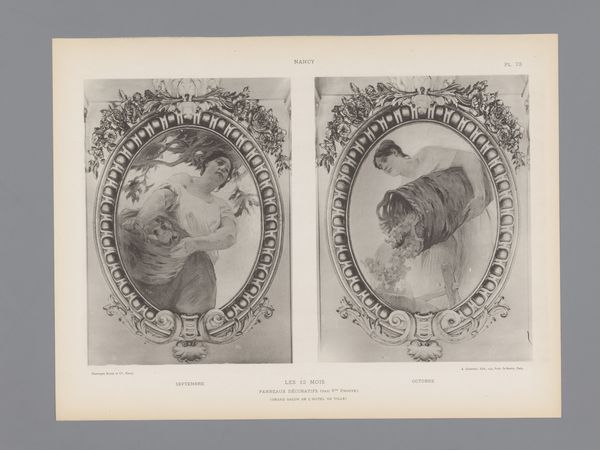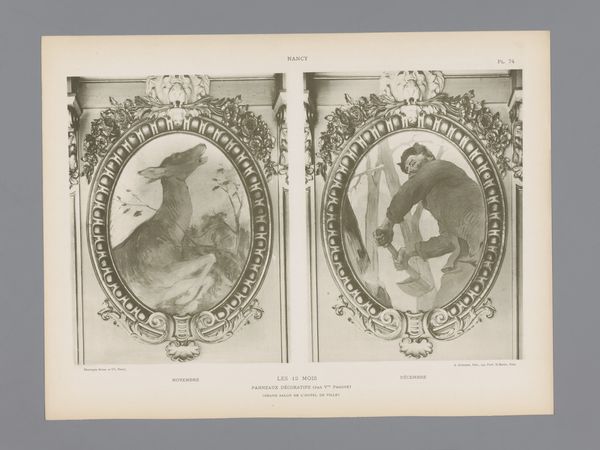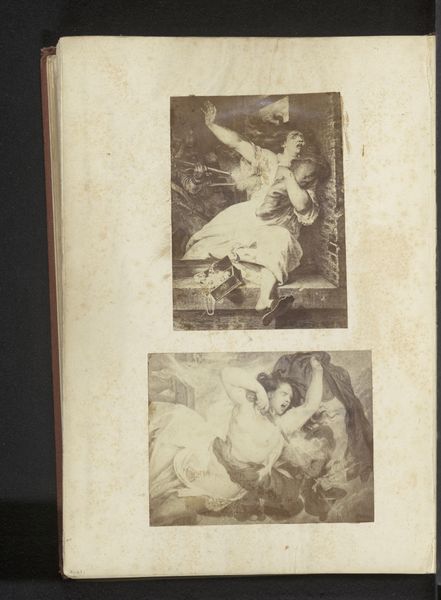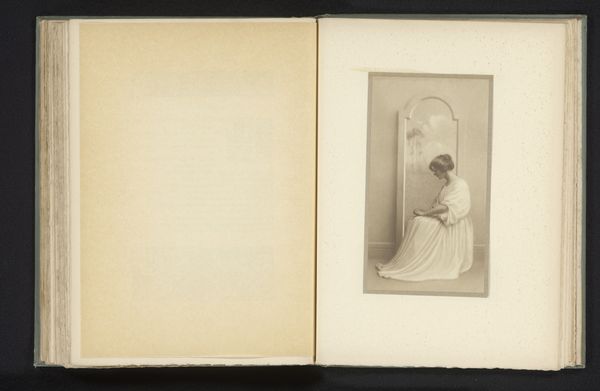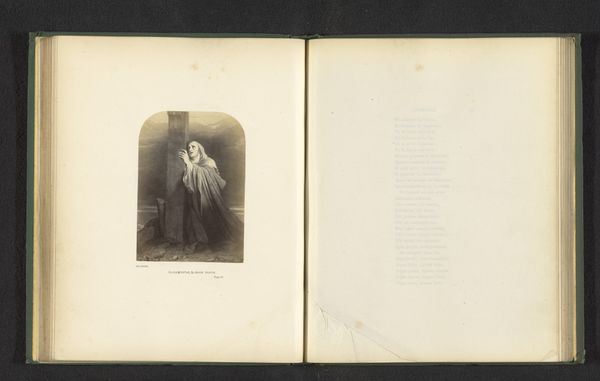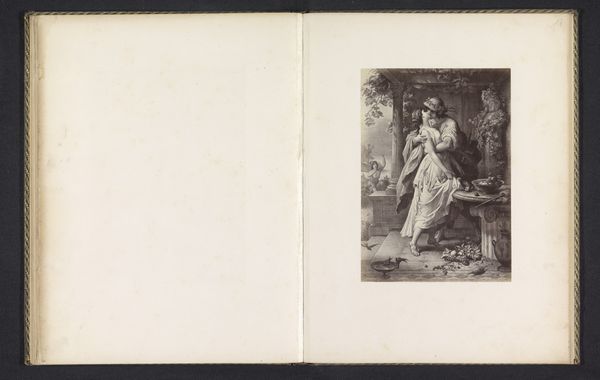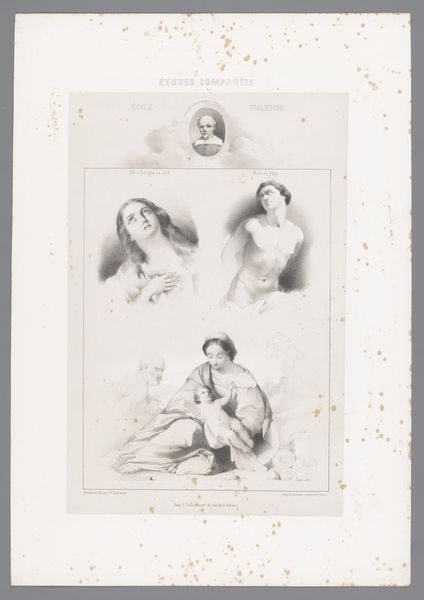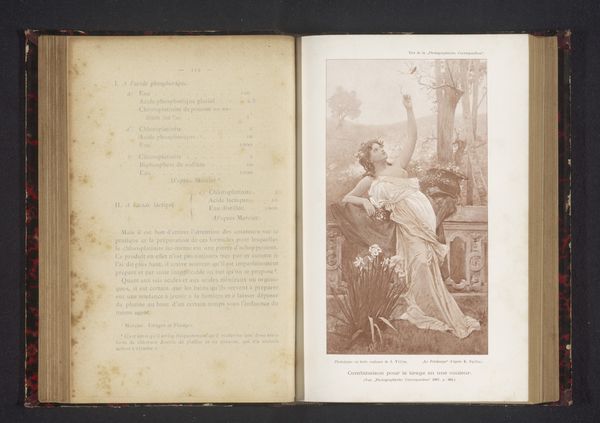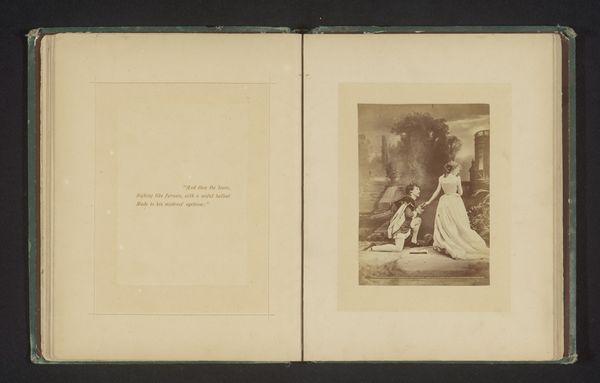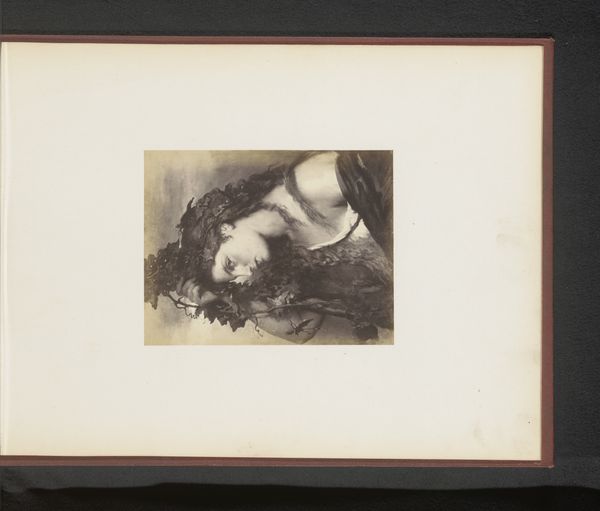
Twee panelen met representaties van mei en juni in het stadhuis te Nancy before 1896
0:00
0:00
drawing, paper, pen
#
portrait
#
drawing
#
paper
#
symbolism
#
pen
#
genre-painting
Dimensions: height 298 mm, width 401 mm
Copyright: Rijks Museum: Open Domain
Editor: So, we're looking at "Twee panelen met representaties van mei en juni in het stadhuis te Nancy," created before 1896. They appear to be drawings made with pen on paper. What strikes me is the contrast – on one panel we have a loving embrace, while on the other there's a lone woman who seems deep in thought. How do you interpret this pairing? Curator: It’s important to situate these panels within their historical context, particularly regarding public art and its role in shaping civic identity. As decorations in the Nancy City Hall, these panels, representing May and June, likely speak to themes of labor, love, and the seasons that defined daily life for the citizenry. Considering their presence in a public space, do you think these panels served a didactic or purely decorative function? Editor: I imagine there was a purpose beyond just decoration, especially given the contrasting depictions of May and June. What symbols can we decode from them, considering they would be on display for public consumption? Curator: Precisely! We have the passionate embrace representing the blossoming of life, the revelry associated with May celebrations and a sense of hopeful optimism. June then shifts that narrative to contemplative repose: harvest and rest after labor perhaps? Consider how these panels reinforce or perhaps even challenge the socio-political norms and expectations around work, leisure and relationships during the fin-de-siècle in Nancy. Do these representations reflect an idealised reality, or do you see elements of social commentary embedded within them? Editor: I hadn't considered the socio-political angle that deeply. I see your point about the idealized versus reality element now. It really changes my perspective on these seemingly straightforward images! Curator: Exactly, art in public spaces is rarely just about aesthetics; it’s a reflection of societal values and power structures. Understanding this relationship is key to a fuller appreciation. Editor: Thanks, that really expanded how I was looking at these drawings! I’ll remember that connection moving forward.
Comments
No comments
Be the first to comment and join the conversation on the ultimate creative platform.
